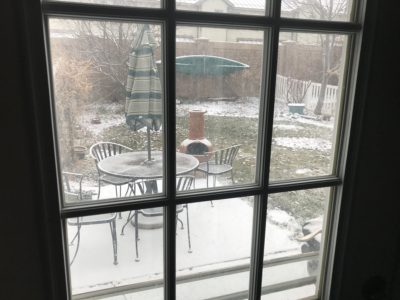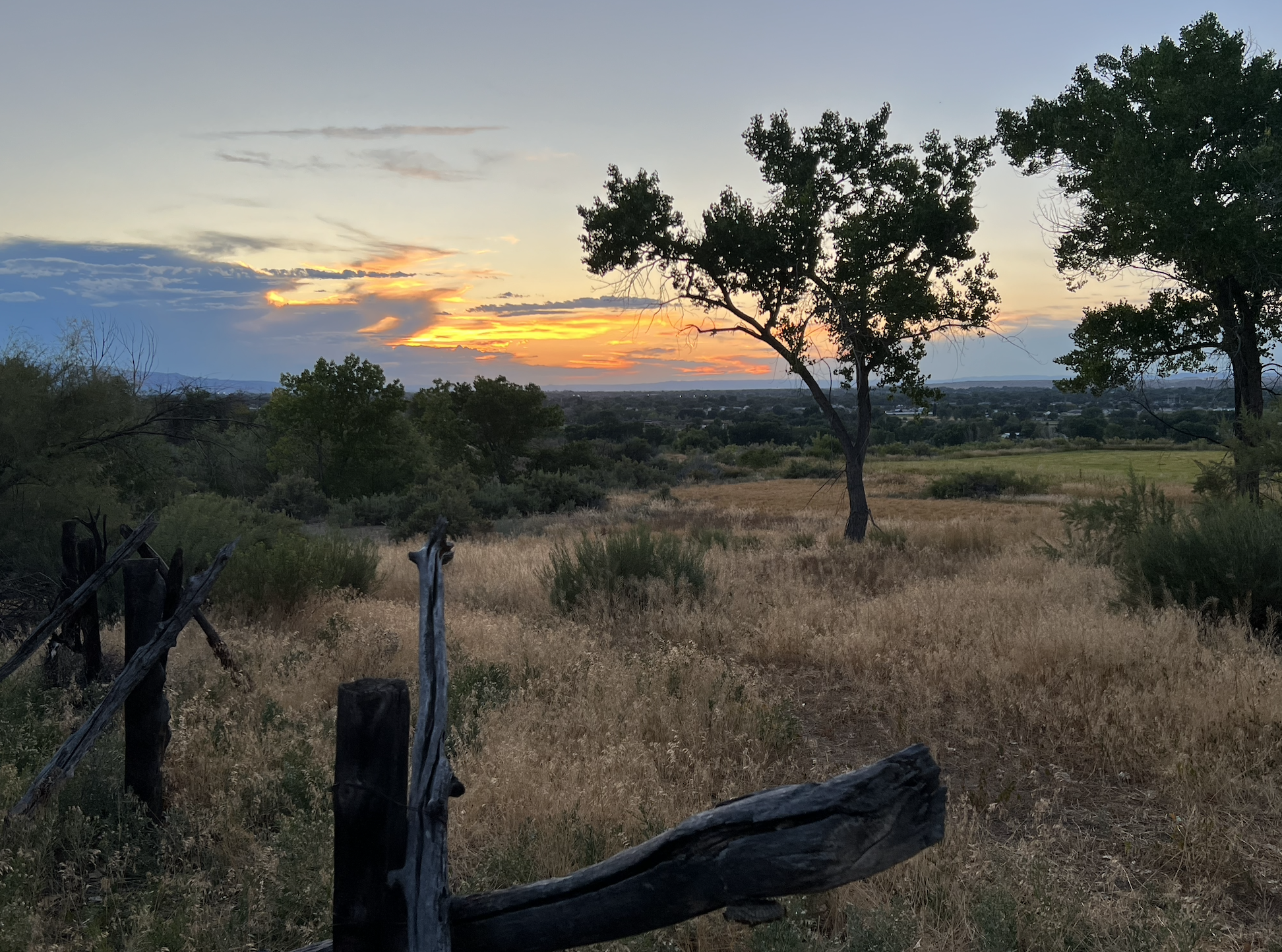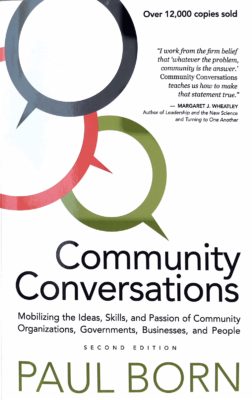
It is December in Utah County, just after Christmas. The first snow of the year has fallen at my elevation, 4,500 feet. The deeper snowfalls are yet to come, but this tiny skiff still catches my attention through the window pane of my back door, looking out into my back yard. I like how the snow sits on the iron meshed picnic table, where I’ve had summer meals with family and a few friends. I like how the snow sits on the chimenea, that I’ve fed several times over the last four months to create ceremonial burn and letting go. I like how the snow sits on the damaged canoe hung on the back fence. The canoe gave up floating reliably many years ago — I chose to make it yard art rather than landfill. I like how the snow collects around the spot where I buried my dog Shadow a little over a year ago, after his full 14 years of his life.
This back door bridges the upstairs bedroom part of my home with the downstairs living and kitchen area. I pass this paned window often. With first snow, the view beckoned a moment of my attention. I’ve always loved the insulation of winter. I’ve long loved the quiet of winter that slows me and others into reflection — even as the noise and tensions of the world escalate.
We can be known, and perhaps should be known, by what we notice.
It’s one of the key access points for any team or community to connect.
I’ve been inviting this known-by-noticing many times over the last few months of events that I’ve hosted. At the Art of Hosting in Denver at the end of November with co-hosts Erin Gilmore, Chris Chopyak, and Lawrence Kampf. At The Circle Way Advanced Practicum in December with co-host Amanda Fenton. On phone calls with clients in planning and friends in learning.
Perhaps we are best known by what we notice, in the moment.
You see, who we are, I’ve come to learn, changes. It’s not the bedrock stuff that supports our changes over the years. It’s the way we enter into the scenes in front of us. It’s the way we give ourselves to the scene, daring to welcome being moved by the people and the learning and the experience that is in front of us. We change, all of us, despite the many narratives of consistency.
And therein lays a fundamental reason why I continue to work through dialogue-based, circle-based modalities of creating connection and collaboration with groups of people. It is our job, dare I say, to be noticers together. To offer meaning. To wonder out loud about meaning. To plan projects. To stay with the details. The dare to make story a key format for learning together.
Welcome knowing others by what they notice. Welcome knowing self by what you notice. Even the silliest of details. I trust, and will continue to host spaces in which gifting our noticing changes what we do and how we are.
It is quiet in my home now. The sky is blue today. The January sun has risen over the Wasatch Mountains east of me, now illuminating a valley of glistening snow on mountain tops, in valleys, and in back yards like mine. Today I return to writing and blogging after four months of choosing deliberately not to. Sometimes it was hard not to — and felt crazy. But I was determined to follow the gut feel I had to let go, and to welcome a different kind of noticing.
I look forward to reentering noticing — yours and mine — through writing and words, to further develop the inner and outer among us, to further create worlds and teams of kindness, consciousness, and, flow.

